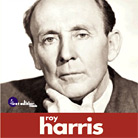July 2003
Farnsley was aware of the birth of the LP record, and in 1952 the Louisville Orchestra signed a three-record contract with Columbia Records. Later the orchestra would create its own label, First Edition, though Columbia producers and engineers would continue to record the orchestra’s sessions. By 1995, there were 158 LPs and ten CDs encompassing over 400 works by 250 different composers. This extraordinary legacy included the music of such 20th-century giants as Virgil Thomson, Paul Hindemith, William Schuman, Heitor Villa-Lobos, Darius Milhaud, Carlos Chavez, Bohuslav Martinu, Henry Cowell, Norman Dello Joio, Lukas Foss, Alan Hovhaness, Peter Mennin, and Roger Sessions. Though other nationalities were represented, most of the composers were American. Only Howard Hanson’s Mercury series of recordings rivals the importance of the Louisville performances in promoting American music. This valuable catalog has now been licensed to First Edition Music, a division of the Santa Fe Music Group. The latter intends to eventually release it in its entirety. The initial releases are linked by composer, so recordings from different eras and different conductors can be found on the same CD. Most are stereo, but many are mono. The Harris CD, for instance, contains recordings from 1949 (Kentucky Spring, mono), 1984 (the Violin Concerto, stereo), and 1965 (the Fifth Symphony, stereo). All of the music on this disc is energetic, accessible, and thoroughly American in sound. Except in the Symphony No. 4, the Folksong Symphony, Harris did not use specific folk tunes very often. He did, however, incorporate the rhythms and harmonic progressions they contained, so that one always has the flavor of "Americana." Kentucky Spring vividly conveys folk-like memories of the awakening earth. The Violin Concerto calls for dance-like variations from the soloist over themes that remind one of church hymns. The Fourth Symphony, written during the middle period of World War II, is heroic in nature, yet contains the composer’s signature dance-like effects. The recordings are all very good and have been successfully remastered. The recording orchestra was small, so the sound is never lush. What might be lost in warmth is gained in clarity. Since Harris often wrote in a fugal manner, the extra air proves quite welcome. GO BACK TO: |
 Roy Harris - Kentucky
Spring*; Concerto for Violin and Orchestra**; Symphony No. 5*
Roy Harris - Kentucky
Spring*; Concerto for Violin and Orchestra**; Symphony No. 5* In 1948, Louisville
Orchestra manager, Charles P. Farnsley, hit on an idea to rescue the orchestra from
financial difficulties that was to have a resounding effect throughout the musical world.
He cut the orchestra from 70 to 50 players and decided not to contract many
"name" soloists. Instead, the orchestra would commission works by prominent
20th-century composers. These would be performed as world premieres by the orchestra,
often conducted by the composers themselves.
In 1948, Louisville
Orchestra manager, Charles P. Farnsley, hit on an idea to rescue the orchestra from
financial difficulties that was to have a resounding effect throughout the musical world.
He cut the orchestra from 70 to 50 players and decided not to contract many
"name" soloists. Instead, the orchestra would commission works by prominent
20th-century composers. These would be performed as world premieres by the orchestra,
often conducted by the composers themselves.